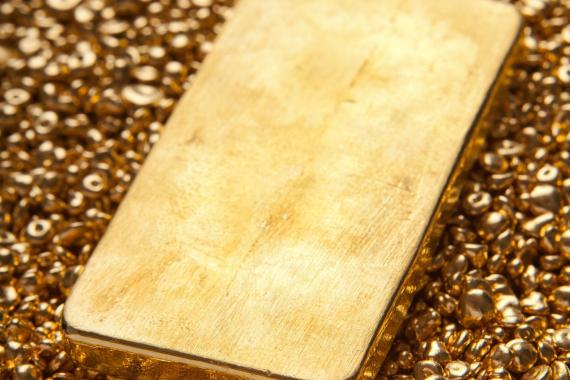환경안전사고 | Best Study in Germany Consultant in India - yes Germany
- 신고자: Royce Blackall (QZ / BA)
- 신고일자: 24-12-19 22:51
 In these last two areas Byzantine gold competed from the 7th century with the growing output of Arab gold dinars. The principalities of Beneventum and Salerno and the duchies of Naples and Amalfi fell throughout the Byzantine-Arab orbit, and their gold, silver, and bronze confirmed these beside Carolingian influences; bronze coins in particular adopted Byzantine fashions, whereas the gold tari of Salerno had been curious fractional copies of Arab dinars. The entire output of gold was nice, and its influence can be judged partly from the distribution of the coins themselves and partly by the typological influence exerted by the Byzantine upon different coinages, from the first Arab-Sāsānian gold of the East to that of Italy and Gaul within the West. These portrait coins initially have been designed presumably for presentation to the Holy See, for the reason that reverse bore the inscription MVNVS DIVINVM round a cross. Those with the portrait of Maria Theresa acquired large recognition on both aspect of the Red Sea.
In these last two areas Byzantine gold competed from the 7th century with the growing output of Arab gold dinars. The principalities of Beneventum and Salerno and the duchies of Naples and Amalfi fell throughout the Byzantine-Arab orbit, and their gold, silver, and bronze confirmed these beside Carolingian influences; bronze coins in particular adopted Byzantine fashions, whereas the gold tari of Salerno had been curious fractional copies of Arab dinars. The entire output of gold was nice, and its influence can be judged partly from the distribution of the coins themselves and partly by the typological influence exerted by the Byzantine upon different coinages, from the first Arab-Sāsānian gold of the East to that of Italy and Gaul within the West. These portrait coins initially have been designed presumably for presentation to the Holy See, for the reason that reverse bore the inscription MVNVS DIVINVM round a cross. Those with the portrait of Maria Theresa acquired large recognition on both aspect of the Red Sea.
 World War II events following the invasion of Normandy included the Allied bombing of Cherbourg, France, and a heavy blow to the Japanese in the Battle of the Philippine Sea. Monogram deniers had been coined in France, Germany, northern Italy, and northeastern Spain; temple deniers were additionally extensively struck, usually inscribed XRISTIANA RELIGIO, though this legend was sometimes replaced by the name of a major French mint city. If you happen to lived in the course of the cold war era or maybe in the course of the '80s, the identify of the country was Czechoslovakia. St. Bartholomew’s was also hard hit by Allied bombs throughout World War II, nevertheless it was as soon as again rebuilt. Paper currencies of this interval have been fully redeemable in gold coin, but the gold standard was abandoned throughout World War I; since then, paper has been redeemable effectively solely in base-metal alloys. From 1870 the kings of Prussia as emperors coined for all Germany; henceforth, the innumerable local variations in coinage had been subsumed beneath the gold price Reichsmark of a hundred pfennigs, the silver standard being abandoned. The historically privileged nonregal mints were incapable of producing the mechanical energy wanted for the intensive coinage not solely of the big gold denominations ensuing from the influx of Spanish-American treasure after 1493 but additionally with the equally giant silver thalers, or dollars, starting to be produced with silver from the German Joachimsthal mines.
World War II events following the invasion of Normandy included the Allied bombing of Cherbourg, France, and a heavy blow to the Japanese in the Battle of the Philippine Sea. Monogram deniers had been coined in France, Germany, northern Italy, and northeastern Spain; temple deniers were additionally extensively struck, usually inscribed XRISTIANA RELIGIO, though this legend was sometimes replaced by the name of a major French mint city. If you happen to lived in the course of the cold war era or maybe in the course of the '80s, the identify of the country was Czechoslovakia. St. Bartholomew’s was also hard hit by Allied bombs throughout World War II, nevertheless it was as soon as again rebuilt. Paper currencies of this interval have been fully redeemable in gold coin, but the gold standard was abandoned throughout World War I; since then, paper has been redeemable effectively solely in base-metal alloys. From 1870 the kings of Prussia as emperors coined for all Germany; henceforth, the innumerable local variations in coinage had been subsumed beneath the gold price Reichsmark of a hundred pfennigs, the silver standard being abandoned. The historically privileged nonregal mints were incapable of producing the mechanical energy wanted for the intensive coinage not solely of the big gold denominations ensuing from the influx of Spanish-American treasure after 1493 but additionally with the equally giant silver thalers, or dollars, starting to be produced with silver from the German Joachimsthal mines.
In Spain, Carolingian mints had been established only in the excessive northeast, at Barcelona, Ampurias, and Gerona. They continued to be coined in massive numbers at Vienna and London, with the date 1780, for circulation in those regions: 24,000,000 were struck in 1940-forty one from British mints alone. But the infringement of his minting rights emphasised the financial importance of northern ports, particularly the Frisian Duurstede, from the neighbourhood of which emanated large numbers of copies of his gold sous and half-sous. Louis IV d’Outremer granted coinage rights to the archbishop of Reims as early as 850, and the system was swiftly developed in the tenth century, concessions being made to a large number of ecclesiastical foundations and even in a few cases to lay lords as nicely. In central Europe, Carolingian coinage was not reflected east of the Rhineland, but in the north the imitation of Carolingian cash in or round Duurstede bred more distantly derivative points elsewhere, presumably even in Scandinavia; these were, in impact, silver deniers, but their varieties, with their emphasis on ships and animal designs, present them to belong to the Nordic, as opposed to the Teutonic, stream of monetary design. Northern Italy was an integral part of the territories controlled by the earlier Carolingians, but from the mid-ninth century changes started to point out: the deniers of Pavia and Milan, although retaining Carolingian types, turned broader and thinner, with extensive rims like these of the later German bracteates (see below Italy and Sicily).
Portraiture, schematically stiff on later Byzantine cash, was revived with hanging realism most notably in Renaissance Italy and thereafter flourished. The orthography of Byzantine coin legends turned remarkably complex as the Latin and Greek alphabets were increasingly mingled and individual letters took on new or specialized varieties and words had been severely abbreviated. With its columns of Greek and Italian marble, its bronze doors, and the most important mosaic of its dome (now destroyed), the Palatine Chapel of Aachen, from its inception, has been perceived as an exceptional inventive creation. The Palatine Chapel was constructed on the instigation of the Holy Roman emperor Charlemagne to act as a religious focal point for his imperial capital metropolis of Aachen. Once this capital is out of the markets traders are going to decide on to safeguard it in gold. Among the building’s treasures are the gilded sarcophagus of the Magi (claimed to carry their stays), the Milan Madonna (a wood sculpture from 1290 depicting Mary and Jesus), and the Gero Cross (relationship from 970, the largest picket cross north of the Alps). It was the first vaulted construction to be built north of the Alps since Antiquity.
If you have any concerns relating to wherever and how to use أسعار الذهب اليوم, you can make contact with us at our own web site.

